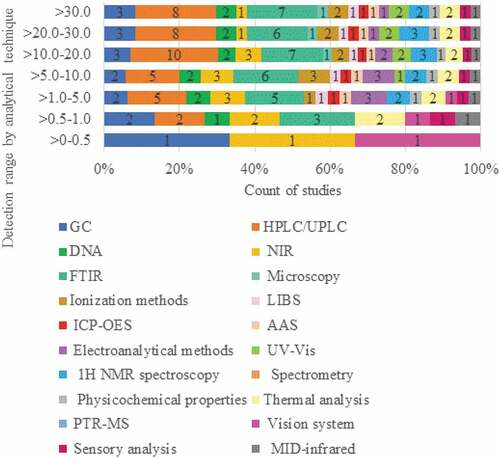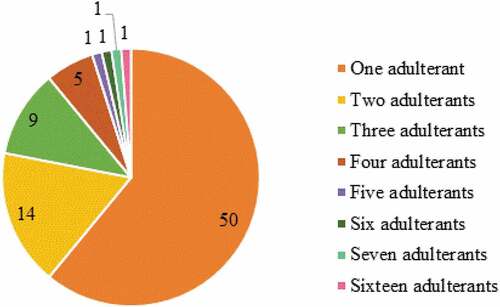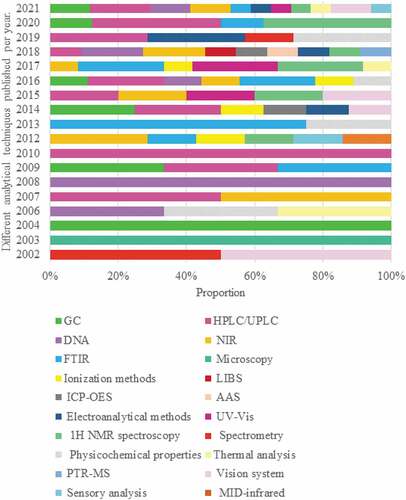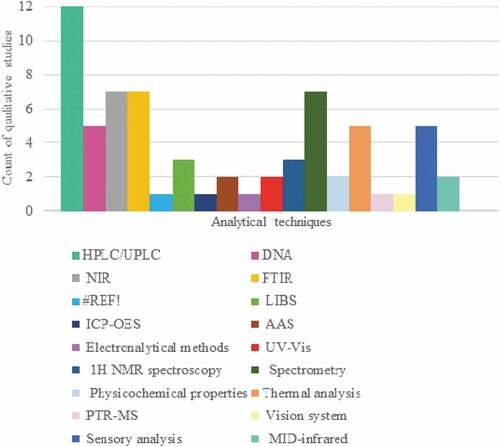Figures & data
Figure 1. Flow diagram with outcomes of the selection process for the systematic review. Selection criteria are outlined in Planning Section. n – number of studies.
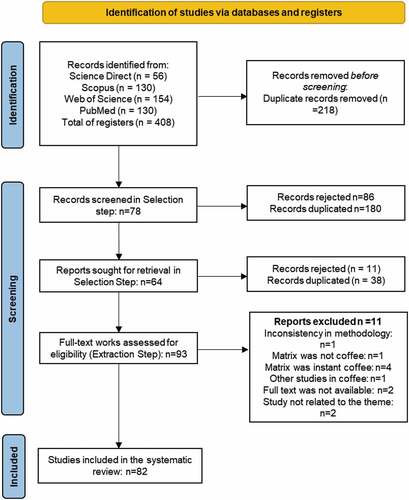
Table 1. Results of data extracted from the studies in the extraction step through the extraction form.
Figure 2. Type of coffee matrix used in the selected studies: (a) the percentage of type of coffee used as a matrix to be adulterated and (b) the number of type processes (roasted bean or roasted and ground) used in the studies per species and quality of coffee. The number of studies was inserted in the middle of the bar, corresponding to the type of process.
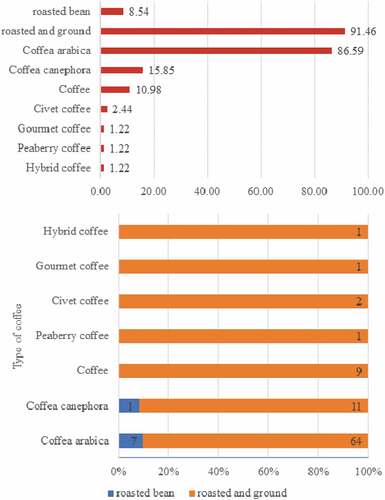
Figure 3. Percentage of selected studies by type of coffee adulterant analyzed (2000–2021). The number of studies was inserted at the outer end of the bar.
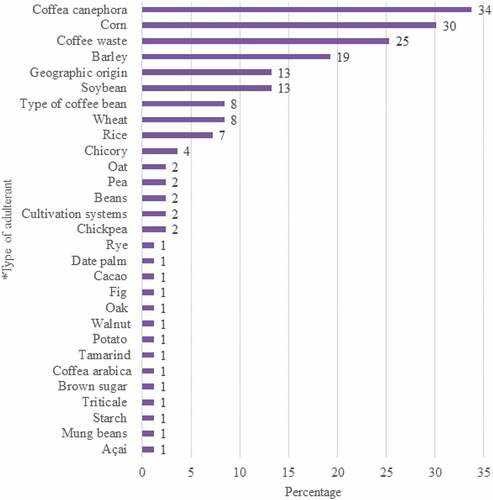
Figure 5. Percentage of selected studies by techniques applied in the detection and/or quantification of coffee adulteration. The number of studies was inserted at the outer end of the bar.
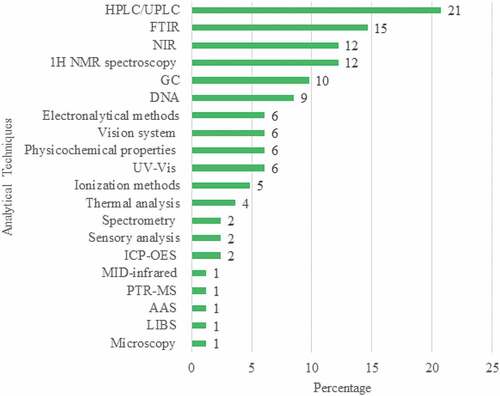
Figure 7. The proportion of studies by type of adulterants investigated using analytical techniques. The number of studies was inserted in the middle of the bar, corresponding to the analytical technique used for each adulterant.
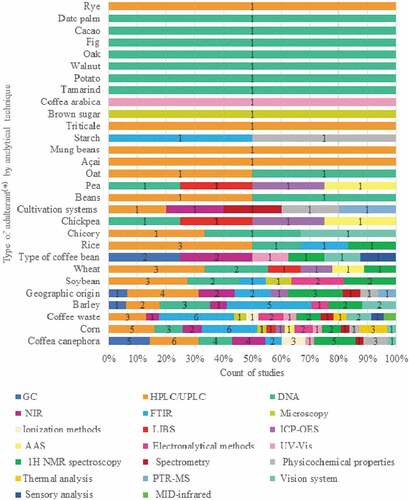
Figure 8. Number of studies according to adulterant detection range of selected studies of adulteration in roasted coffee.
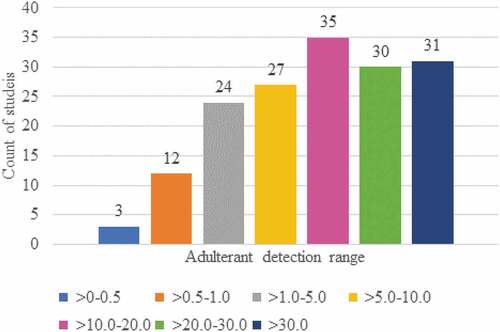
Figure 9. The proportion of studies according to the detection range quantified by the analytical technique. The number of studies was inserted in the middle of the bar, corresponding to the analytical technique used for each detection range.
